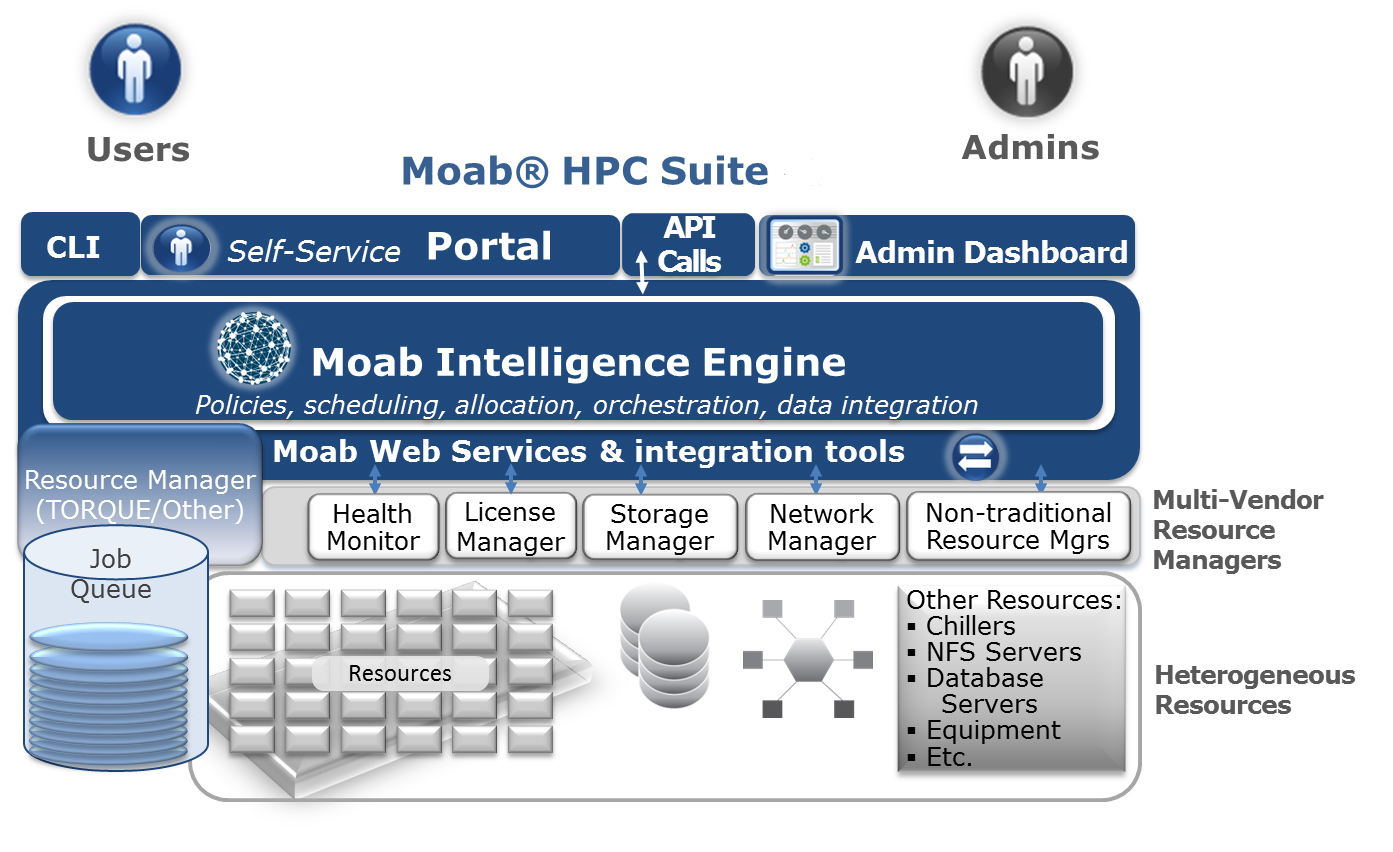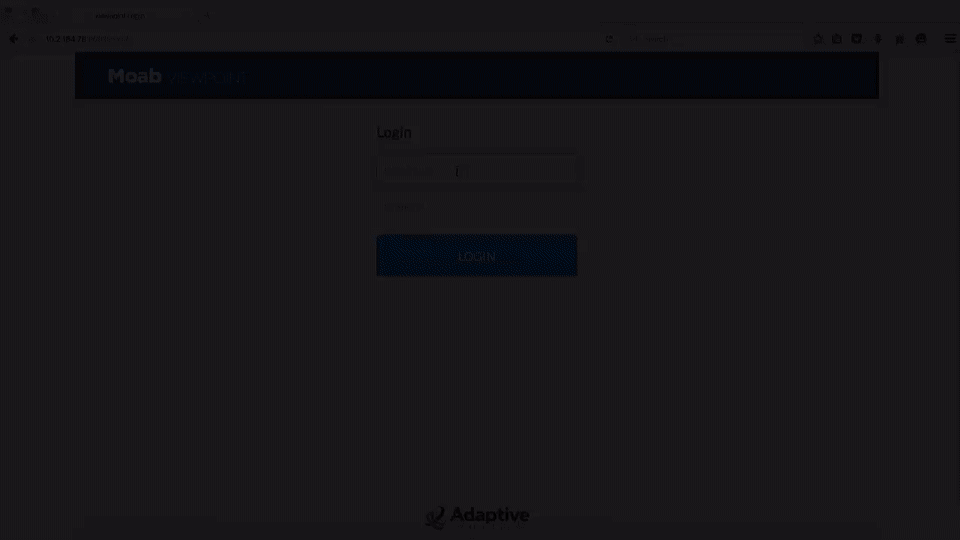MOAB HPC SUITE SYSTEM COMPATIBILITY
Moab HPC Suite works with a variety of platforms to give customers flexibility, choice, and maximum leverage of existing investments. Many commonly used resource managers, operating systems, and architectures are supported by Moab HPC Suite including:
Operating system support
Linux (Debian, Fedora, RedHat, SUSE), and UNIX (AIX)
Resource manager support
In addition to resource managers such as Torque and SLURM it integrates with many other types of resource managers and monitors such as HP Cluster Management Utility, Nagios, Ganglia, FlexLM, and others.
Hardware support
AMD x86, AMD Opteron, HP, Intel x86, Intel IA-32, Intel IA-64, IBM i-Series, IBM p-Series, IBM x-Series. Moab is also optimized for SGI and Cray systems.
Database support
Moab supports PostgreSQL, Oracle and MySQL databases so customers can use the database that best meets their needs or is their system standard.
MOAB HPC SUITE COMPONENTS
Both CLI and Moab Viewpoint Self-service Portal
Moab Viewpoint portal eases job submission and management for users from any location with minimal training required.
Moab Viewpoint Portal and Moab Cluster Manager Admin Dashboard
Moab Viewpoint portal eases job submission and management for users from any location with minimal training required.
Moab Workload Manager Intelligence Engine
Automates the complex, optimized workload scheduling decisions and management actions with multi-dimensional policies that mimic real-world decision making. These policies balance maximizing job throughout and utilization with meeting SLAs and priorities.
Moab Web Services and Integration Tools
Provides easy, standardized integration interfaces with resource managers, third party management tools, and existing third party portals.
Torque Resource Manager
Provides continually updated information on the state of nodes and workload. Using the advanced scalability, reliability and management features of Torque helps you to fully exploit Moab's capabilities should you choose to use it as your resource manager. Moab can also integrate with, and leverage, other resource managers, such as SLURM.
INTELLIGENT HPC WORKLOAD MANAGEMENT ACROSS INFRASTRUCTURE AND ORGANIZATIONAL COMPLEXITY
Moab HPC Suite acts as the "brain" of a high performance computing (HPC) system to accelerate and automate complex decision making processes. The patented Moab intelligence engine provides multi-dimensional policies that mimic real-world decision making. These multi-dimensional, real-world policies are essential in scheduling workloads to optimize job speed, job success and resource utilization. Moab HPC Suite integrates decision-making data from and automates actions through your system's existing mix of resource managers. This enables all the dimensions of real-time granular resource attributes, resource state, as well as current and future resource commitments to be modeled against workload/application requirements. All of these dimensions are then factored into the most efficient scheduling decisions. Moab also dramatically simplifies the management tasks and processes across these complex, heterogeneous environments. Moab works with many of the major resource management and industry standard resource monitoring tools and covers mixed hardware, network, storage and licenses.
Moab HPC Suite multi-dimensional policies are also able to factor in organizational priorities and complexities when scheduling workloads. Moab ensures the workload is processed according to organizational priorities and commitments and that resources are shared fairly across users, groups and even multiple organizations. This enables organizations to automatically enforce service guarantees and effectively manage organizational complexities with simple policy-based settings.
Moab HPC Suite is architected to integrate on top of your existing resource managers and other types of management tools in your environment to provide policy-based scheduling and management of workloads. It makes the optimal complex decisions based on all of the data it integrates from the various resource managers and then orchestrates the job and management actions through those resource managers. Moab's flexible management integration makes it the ideal choice to integrate with existing or new systems as well as to manage your high performance computing system as it grows and expands in the future.











